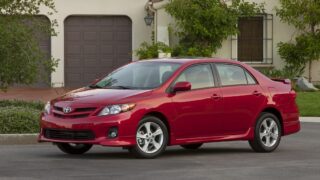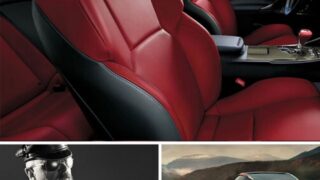Toyota Eagle MkIII: the Most Infamous Race Car in the History of IMSA
Discussing the history behind one of the most utterly dominant racing vehicles of all time: the Toyota-powered Eagle MkIII!
The history of American motorsport is filled with technological innovation that pushed the limits of our understanding of what materials and the human body can achieve. And IMSA is no exception, spearheading sportscar racing since 1969. The storied racing series hosted GT cars in a variety of flavors. Everything fom high-displacement modified sports cars to completely bespoke silhouettes found success in IMSA GT. Vehicles like the Audi 90 GTO, for example.
Image by: CarpenterDesign
In 1981, IMSA grew further to incorporate purpose-built prototype cars, mirroring early Group C cars raced in Europe. There were various cars which proved more dominant than others during this time. Namely, the Porsche 962, which debuted at the 1984 24 Hours of Daytona and won an incredible 21 constructors’ championships. But overall, the actual ruleset was quite lax. If you wanted to race in GTP, bring a spaceframe chassis, a massively powerful engine, and enough safety equipment to pass the inspection smell test.
It wasn’t long before rivals rose up to the challenge, with stiff competition from a variety of racing teams. One of which became so dominant that it forever changed the landscape of the discipline: the Toyota Eagle MkIII, the monstrous All American Racers prototype that blew the doors off any and all competition. Let’s explore the history of this beast of a racecar and what led it to become such a force to be reckoned with.
To the point where it may have single-handedly ended an entire class by itself.
The Legacy of All American Racers
 Image by: John Chapman
Image by: John Chapman
The story of the Eagle MkIII begins with the creation of All American Racers, formed by Dan Gurney and Carroll Shelby in 1964. Given that it was headed by two of the most well-known individuals in American motorsports history, it’s no surprise that the team quickly rose to prominence throughout the Golden Years of sportscar racing. The team debuted their first vehicle in 1966, the Eagle-Westlake MkI. This gorgeous creation was a Formula One chassis that went on to make racing history well before the Eagle MkIII was ever conceived. Originally, Gurney equipped the MkI with a 2.7L Coventry Climax before later going with the Type 58 3.0L V12. Competing in a total of 26 Grands Prix, Gurney’s team achieved their “All-American” win at Spa-Francorchamps in 1967. Which marks the only Formula 1 win by an American-built car, and the second (and so far last) by an American constructor.
Crucially, AAR competed during a pivotal development period for American motor racing. The late 1960s saw the rise of aerodynamics and lightweight, turbocharged engines, which became crucial factors in AAR’s later successes. Namely, from such cars as the early Chaparrals, as well as the Brawner Hawk III. The latter of which won the 1969 Indy 500 with a 159 c.i. Ford V8, which produced 680-700 horsepower thanks to a Garrett turbocharger that looked more at home on a diesel-electric locomotive.
Images by: Spurzem, Indianapolis Motor Speedway
Alongside this, teams developed a keen understanding of aerodynamic effects, employing ground effect and other principles in both sportscar and open-wheel racing. With teams like Lotus and Chaparral heading early aerodynamic development throughout the 70s, other teams began taking notes. And by the early 80s, turbocharged silhouette cars dominated sportscar racing. Classes like Group 5, GTO, and others rose to prominence. The perfect playground for Gurney’s team, looking to shift from open-wheel to sportscar racing.
Partnership with Toyota
Image by: By Brian Snelson
In 1983, AAR got the chance with a contract written up by Toyota, a partnership that lasted until the demise of GTP-class and beyond. The GTO Celica, based on the upcoming 1985 T160 Celica, almost ended disastrously. This is due to a rule requiring vehicles to use their original drivetrain – and initial T160 Celica production was exclusively FWD. Thankfully, some last-minute lobbying by AAR got this rule changed, and the Celica entered as RWD. Now colloquially called AAR Toyota (though AAR remained a distinct element separate from Toyota), the team saw huge initial successes, culminating in a GTO class championship win in 1987. The Group B-powered Celica GTO ultimately retired in 1988, having won five of the 17 races but finishing third overall.
Now with several years of experience, AAR Toyota branched out to the popular GTP class, entering the brand-new Toyota 88C. With Porsche dominating the Japan Sports Prototype Championship and Toyota branching out into US markets, the 88C brought in even more recognition and a valuable starting point for the new Eagle series. AAR Toyota developed their new chassis based off the existing 88C, codename HF89 for the 1989 IMSA GT Championship.
Image by: riceracingdonmega
Named for designers Ron Hopkins and Hiro Fujimori, Eagle HF89 utilized proven technologies from the Toyota 88C, including the powertrain, running gear configuration, and some aerodynamic elements. On the other end, AAR Toyota completely altered the bodywork, incorporating lessons learned from other GTP-class winners like Nissan and Jaguar. This culminated in a heavily modified 88C, and was good enough to secure five wins across 38 races. Still, it wasn’t perfect, plagued with understeer and cooling issues throughout the 1989-1990 seasons.
Enter the Eagle MkIII
Image by: Motohide Miwa
All this experience led up to what became the undisputed heavyweight champion of 90s IMSA: the Eagle MkIII. AAR continued racing the HF89 throughout 1990 while developing a total clean-sheet design for the Eagle MkIII. The team and Toyota shared a vast wealth of experience with turbocharged, lightweight chassis, with several decades behind the pair. Veteran designers John Ward and Hiro Fujimori headed the design, codenamed WFO91 (Ward, Fujimori, and others, 1991).
What do YOU think about the Eagle MkIII?
Let us know HERE in the forums!
WFO91, at the most fundamental level, was a ground-up carbon-fiber monocoque chassis. The team utilized an engine of the same family as Toyota’s Group C cars, the 3S-GTM. Which, in turn, derived from the Celica GTO, and the Group B cars preceding it. This marked AAR’s first such chassis design, and utilized numerous advanced aerodynamic principles like an integral front diffuser and large ground effect tunnels. The tunnels in particular proved highly effective at defeating the chassis’ tendency to understeer. It was so secret that the team even painted the elements behind the front wheel flat black to cleverly hide the tunnels in the livery.
Image by: Derin Richardson
Thanks to the incredibly lightweight and well-designed chassis, the Eagle MkIII weighed just 1,834 pounds. Coupled with a 2.1L engine producing an eye-watering estimated 800 horsepower, it easily outperformed comparable vehicles in its class. However, the main selling point remained its aerodynamics, with its nose extractors utilizing a single inlet to multiple cooling and airflow outlets. This provided exceptional downforce – up to 6600 pounds at 190 miles per hour. Without the need for a massively drag-inducing rear wing. In addition, it helped improve engine longevity thanks to plumbing designed to work in tandem with the increased airflow. Basically, the car’s frontal cross-section was as minimal as possible, redesigned to facilitate moving a huge volume of air for cooling and aero elements over the top and rear. This increases their effectiveness without making them larger (and, therefore, more drag-inducing).
How the Eagle MkIII Ended the GTP-Class
The Eagle MkIII debuted in the 1991 season at Laguna Seca, with Juan Manuel Fangio II easily dominating the entire field. With over a minute’s clearance to 2nd, the only reason he lost was because of a pit stop penalty. Although he didn’t repeat this for its second race, taking an easy victory at Portland. During its inaugural season, the Eagle MkIII debuted nine races into a 15-race championship. And it still managed to secure 5th place overall with 107 points.
1992-1993 proved to be the most outstanding years ever for Toyota’s motorsports division up to that point. AAR Toyota fielded two cars, #98 and #99, driven by Rocky Moran and Juan Fangio II, respectively. The Eagle MkIII set numerous records during its reign, including an unprecedented 17-win streak. Only broken by one race: 1993’s Road America, where it did not participate. Ultimately, the Eagle MkIII finished first in an incredible 21 of 27 races entered, with 14 of those being consecutive, unbroken wins. A feat never before or since replicated in the history of IMSA.
Influence on the Future of Motorsports
Images by: Derin Richardson
The Toyota Eagle MkIII’s final race took place in Phoenix. And, to no one’s surprise, AAR Toyota secured a 1-2 finish, closing out the season and, ultimately, the entirety of the GTP class. The Eagle MkIII’s dominance brought, in equal measures, hatred and respect from other teams. Ultimately, left with virtually no realistic competition, the AAR Toyota Eagle MkIII effectively monopolized the class. Following other teams pulling out, IMSA ultimately disbanded GTP for 1994. GTP was responsible for introducing a wide variety of innovative technologies into IMSA and Group C in general. However, the general body shape ultimately didn’t last much longer, with the class’s final season worldwide being 1994.
As for the Eagle MkIII, it never competed again after the fall of the GTP-class. However, Toyota continued its partnership with AAR, entering the CART series instead in 1996. But with minimal experience and untested equipment, the team never found much success, ultimately retiring in 1999. AAR Toyota ultimately left for the history books, though its dominance became the stuff of legend. Gurney himself continued innovating and racing for decades after. And Toyota went on to newer prospects in the GT1-class with the equally infamous Toyota TS020 GT-One.
Featured image by: Derin Richardson
















